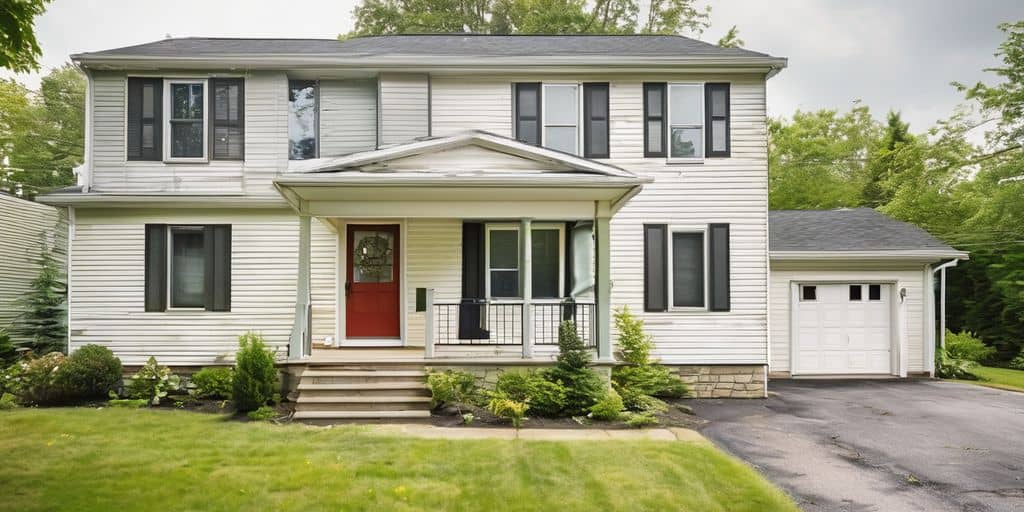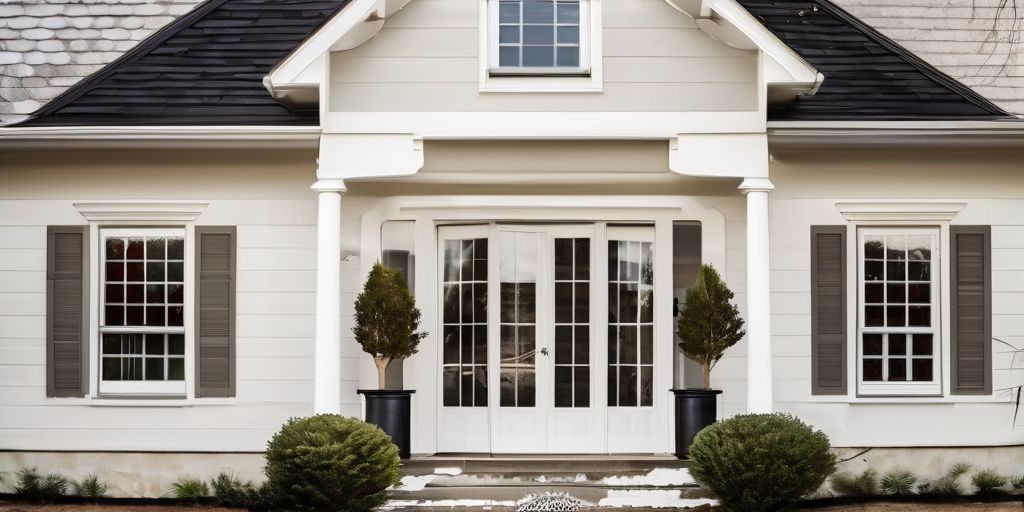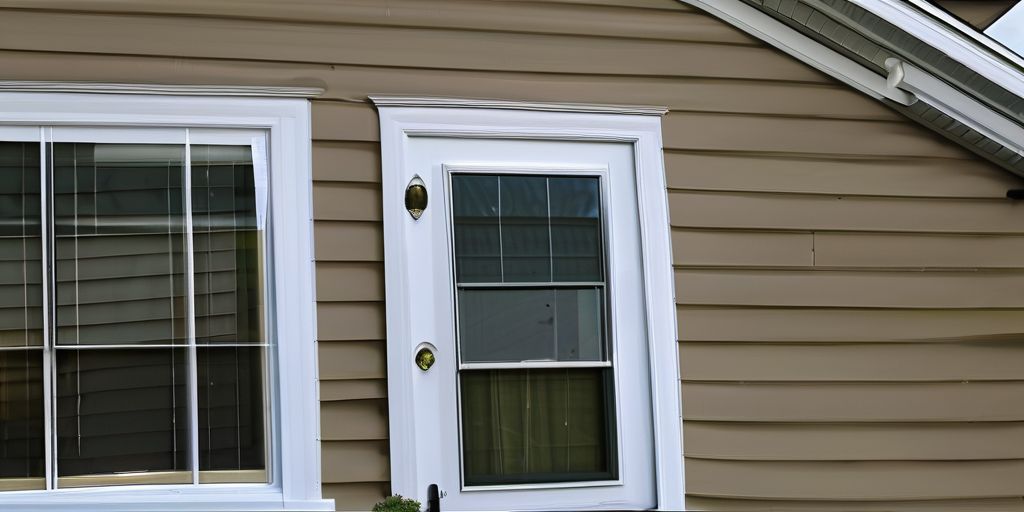Combatting mold and mildew on vinyl siding is essential for maintaining the aesthetic and structural integrity of homes in St. Catharines. Mold and mildew not only cause unsightly blemishes but can also lead to significant damage if left unchecked. This article provides homeowners with a comprehensive guide to identifying, cleaning, and preventing mold and mildew on painted vinyl siding, as well as advice on when to call in the professionals.
Key Takeaways
- Understanding the causes, signs, and impact of mold and mildew is crucial for effective remediation.
- Natural cleaning solutions, such as vinegar, can be both effective and environmentally friendly for removing mold and mildew.
- Regular cleaning and maintenance are essential to prevent mold and mildew growth on painted vinyl siding.
- Proper ventilation and landscaping considerations can help reduce moisture levels and inhibit mold development.
- Professional assistance may be necessary for extensive mold and mildew problems to ensure thorough remediation.
Understanding Mold and Mildew on Vinyl Siding
Causes of Mold and Mildew
Mold and mildew thrive in environments that provide moisture, warmth, and nutrients. On vinyl siding, these fungi can find the perfect conditions to grow, especially in the humid climate of St. Catharines. Here are some common causes:
- Moisture accumulation from rain or humidity
- Lack of sunlight exposure
- Poor ventilation around the siding
- Organic debris like leaves and dirt
Signs of Mold and Mildew
Identifying mold and mildew early can save you from extensive damage. Look for these signs:
- Black or green spots on the siding
- Musty odors around the exterior
- Discoloration or streaks on the surface
Impact on Home’s Exterior
Mold and mildew can have several detrimental effects on vinyl siding, impacting both the appearance and integrity of the material. Persistent mold growth can lead to discoloration, which may be difficult to reverse without professional intervention. Over time, the presence of mold can also cause the siding to become brittle and crack, necessitating costly repairs or replacement.
- Aesthetic damage, such as stains and streaks
- Structural weakening from prolonged exposure
- Potential health risks from mold spores
- Decreased home value and curb appeal
Regular cleaning at least once a year is recommended to prevent mold and mildew buildup.
Effective Cleaning Techniques for Mold and Mildew Removal
Using Natural Cleaning Solutions
When tackling mold and mildew on painted vinyl siding, natural cleaning solutions can be both effective and environmentally friendly. Vinegar, a common household item, is known for its natural disinfectant properties and can be used to combat mold growth. A simple solution can be made by mixing one part water with one part white vinegar.
Step-by-Step Cleaning Guide
- Prepare the cleaning solution by mixing equal parts of water and white vinegar.
- Apply the solution to the affected areas and let it sit for an hour.
- Use a soft brush or cloth to gently scrub the mold away.
- Rinse the area with clean water and allow it to dry completely.
For stubborn mold spots, baking soda can be added to the vinegar solution to create a more potent paste. Apply this paste directly to the mold and let it sit before scrubbing.
Tools and Materials Needed
- White vinegar
- Water
- Baking soda
- Soft brush or cloth
- Spray bottle
- Protective gloves
Always follow the manufacturer’s instructions for any cleaning products used. This ensures both the effectiveness of the product and your safety. If you’re unsure about the process or the safety implications, consider consulting a professional.
By following these techniques and tips for painting vinyl cladding, you can maintain a clean and beautiful exterior for your home. Regular cleaning and maintenance are key to preventing mold and mildew from taking hold, ensuring your painted vinyl siding looks its best for years to come.
Preventive Measures to Keep Mold and Mildew at Bay
Regular Cleaning and Maintenance
Maintaining a routine inspection schedule is essential to identify potential issues early. Here are some tips:
- Daily: Keep surfaces dry and tidy up to prevent clutter.
- Weekly: Vacuum and dust to remove mold spores.
- Monthly: Deep-clean areas prone to moisture.
- Seasonally: Wash windows and deep-clean carpets.
- Yearly: Undertake big projects like cleaning the garage or washing the siding.
By adhering to this schedule, you can significantly reduce the risk of mold and mildew taking hold in your home.
Proper Ventilation Tips
Proper ventilation is crucial in preventing mold and mildew. Ensure that your home is well-ventilated by:
- Using exhaust fans in bathrooms and kitchens.
- Opening windows to allow fresh air to circulate.
- Installing vents in attics and crawl spaces.
Landscaping Considerations
Use landscaping to your advantage by planting mold-resistant plants and ensuring soil grading directs water away from the house. Additionally, make sure gutters and downspouts are clear to prevent water accumulation.
It’s crucial to address any moisture problems promptly to prevent the recurrence of mold and mildew. While these steps can significantly reduce the risk of mold and mildew, it’s important to stay vigilant. Changes in weather and the home environment can introduce new challenges, so adapt your strategies as needed. Remember, prevention is always more cost-effective than remediation.
When to Call in the Professionals
Signs You Need Professional Help
Sometimes, despite your best efforts, mold and mildew can become persistent problems. Here are some signs that it’s time to call in the experts:
- Extensive mold growth that covers large areas of your siding.
- Recurring mold issues even after thorough cleaning.
- Visible damage to the siding, such as warping or cracking.
- Health issues among family members that could be related to mold exposure.
Choosing the Right Service
Selecting the right professional service is crucial for effective mold and mildew removal. Consider the following factors:
- Experience and expertise in dealing with mold and mildew on vinyl siding.
- Use of high-quality products and thorough cleaning techniques.
- Positive customer reviews and ratings.
- Availability of a warranty or guarantee for their work.
What to Expect from Professional Cleaning
When you hire professionals, you can expect a comprehensive approach to mold and mildew removal. Here’s what typically happens:
- Initial inspection to assess the extent of the problem.
- Detailed cleaning plan tailored to your specific needs.
- Use of specialized tools and cleaning solutions.
- Final inspection to ensure all mold and mildew have been removed.
It’s essential to recognize the limits of DIY efforts. If you’re facing persistent issues despite regular maintenance, it might be time to consult a professional.
By understanding when to call in the professionals, you can ensure your home’s exterior remains in top condition, free from mold and mildew.
Maintaining the Beauty and Longevity of Your Vinyl Siding
Maintaining your vinyl siding is essential not only for aesthetic reasons but also for protecting your home’s structural integrity. Regular inspections and timely interventions can save you from costly repairs in the long run.
Routine Inspections
Conducting routine inspections is crucial. Look for signs of warping, rot, or damage, particularly in older homes. Regular inspection can prevent the need for extensive repairs.
Protective Coatings and Paints
Applying a protective sealant helps preserve the siding’s vibrant appearance and provides an additional layer of protection against the elements. Seek advice for sealant selection to ensure compatibility with the vinyl material. Consider customizing paint selection and maintenance for vinyl siding in Niagara Falls’ sunny climates.
Long-Term Care Tips
- Regular Cleaning: Use soapy water for routine cleaning to maintain the appearance and integrity of painted vinyl siding.
- Touch-Up Techniques: Address minor damages promptly to prevent them from escalating.
- Repainting Frequency: Repaint as needed to keep your siding looking fresh and new.
- Enhancing Curb Appeal: Get creative with paint ideas to boost your home’s curb appeal.
Remember, maintaining your vinyl siding is not just about aesthetics; it’s about protecting the structural integrity of your home. Regular inspections and timely interventions can save you from costly repairs in the long run.
Eco-Friendly Solutions for Mold and Mildew
When it comes to combating mold and mildew on painted vinyl siding, eco-friendly options are both effective and sustainable. By choosing environmentally conscious methods, you not only protect your home but also contribute to a healthier planet. Let’s explore some of the best eco-friendly solutions available.
Benefits of Eco-Friendly Cleaners
Eco-friendly cleaners offer numerous advantages:
- Non-toxic: Safe for your family and pets.
- Biodegradable: Break down naturally without harming the environment.
- Effective: Strong enough to tackle mold and mildew without harsh chemicals.
DIY Eco-Friendly Cleaning Recipes
Creating your own cleaning solutions can be both fun and rewarding. Here are a couple of simple recipes:
- Baking Soda and Vinegar:
- Mix half a cup of baking soda with half a cup of vinegar.
- Apply the paste to the mold or mildew spots.
- Allow the mixture to sit for several minutes.
- Scrub gently with a soft brush or cloth.
- Rinse the area with water to remove any residue.
- Lemon Juice and Salt:
- Combine equal parts lemon juice and salt to form a paste.
- Apply to the affected areas.
- Let it sit for about 10 minutes.
- Scrub and rinse thoroughly.
Commercial Eco-Friendly Products
If DIY isn’t your style, there are plenty of commercial eco-friendly products available. Look for cleaners that are:
- Certified by environmental organizations.
- Free from chlorine and phosphates.
- Packaged in recyclable materials.
Investing in eco-friendly cleaning solutions not only helps in maintaining the beauty of your home but also ensures a safer environment for future generations.
By incorporating these eco-friendly options, you can effectively manage mold and mildew while maximizing durability for your exterior vinyl siding. Whether you choose DIY methods or commercial products, the key is to stay consistent and proactive in your cleaning efforts.
Discover eco-friendly solutions for mold and mildew that not only protect your home but also the environment. Our expert team specializes in sustainable methods to keep your living spaces clean and healthy. Visit our website to learn more about our services and how we can help you maintain a mold-free home.
Conclusion
In conclusion, taking proactive measures to combat mold and mildew on St. Catharines’ painted vinyl siding is essential for maintaining the beauty and longevity of your home’s exterior. By regularly cleaning and inspecting the siding, addressing any moisture issues, and using appropriate cleaning solutions, homeowners can effectively prevent and eliminate mold and mildew growth. Remember, a well-maintained home not only looks great but also provides a healthier living environment for you and your family. If the task seems overwhelming, don’t hesitate to call in the professionals to ensure your siding remains in top condition.
Frequently Asked Questions
What causes mold and mildew to grow on vinyl siding?
Mold and mildew thrive in moist, shaded environments. Factors such as poor ventilation, excessive humidity, and proximity to plants can contribute to mold and mildew growth on vinyl siding.
How can I identify mold and mildew on my vinyl siding?
Signs of mold and mildew include discoloration, black or green spots, and a musty odor. Regular inspections can help catch these signs early before extensive damage occurs.
What natural cleaning solutions can I use to remove mold and mildew?
A mixture of equal parts water and white vinegar is an effective natural cleaning solution. Vinegar’s natural disinfectant properties help combat mold growth without harsh chemicals.
How often should I clean my vinyl siding to prevent mold and mildew?
Regular cleaning, at least once or twice a year, is recommended. However, if your home is in a particularly humid or shaded area, more frequent cleaning may be necessary.
When should I call in professionals to handle mold and mildew on my siding?
If the mold and mildew cover a large area, persist despite regular cleaning, or if you notice structural damage, it’s best to call in professionals. They have the expertise and tools to handle extensive mold issues safely and effectively.
Are there eco-friendly products available for cleaning mold and mildew?
Yes, there are several eco-friendly commercial products available that are effective in removing mold and mildew. Additionally, DIY solutions like vinegar and baking soda are both eco-friendly and effective.




